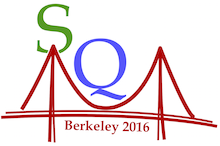Speaker
Jan Wagner
(GSI - Helmholtzzentrum fur Schwerionenforschung GmbH (DE))
Description
The production of charm and beauty quarks in hard parton-parton scattering processes at LHC energies can be described quantitatively by perturbative QCD calculations. Thus the $p_{\rm T}$-differential heavy-flavour cross section in pp collisions can serve as a baseline to gain insight about potential final-state effects in Pb--Pb collisions which modify the $p_{\rm T}$ distribution of heavy-flavour hadrons due to energy loss mechanisms. Cold nuclear matter (CNM) effects such as the modification of the nuclear Parton Distribution Function (nPDF) in the Pb nuclei, parton momentum ($k_{\rm T}$) broadening from soft scattering processes and initial- and final-state parton energy loss play a role in nuclear collisions. They can be studied by analyzing the $p_{\rm T}$-differential heavy-flavour cross section in p--Pb collisions and comparing it to a pp baseline. The dependence of these effects on the collision geometry and particle density is an important aspect to understand and constrain model calculations. The collision geometry and particle density can be estimated through the event multiplicity of the p--Pb collisions or the energy deposited by neutrons at large rapidity.
Another interesting aspect is the interplay between hard processes and the underlying event charged-particle distribution driven by soft processes. Multiple effects are in discussion to contribute to the observed relation between the heavy-flavour cross section and the event multiplicity. An increase in gluon radiation for short-range processes expected at LHC energies has to be taken into account as well as Multiple Parton Interactions (MPIs). In addition to MPIs from single nucleons in pp collisions, multiple-binary collisions take place in p--Pb collisions and produce similar effects which are also expected to increase the heavy-flavour per event yield.
We will present the $p_{\rm T}$-differential measurement of D$^0$, D$^+$ and D$^{*+}$ production as function of the event multiplicity in p--Pb collisions at $\sqrt{s_{\rm NN}} = 5.02$~TeV with ALICE at the LHC. The D mesons are reconstructed in their hadronic decay channels at mid-rapidity. The nuclear modification factor $Q_{\rm p-Pb}$ will be discussed for different event geometry estimators. The multiplicity-dependent yields normalized to the integrated yields measured in pp collisions at $\sqrt{s}=7$~TeV and in p--Pb collisions at $\sqrt{s_{\rm NN}} = 5.02$~TeV will be discussed together with different model calculations. The results in pp collisions will be compared to models including MPIs while the results in p--Pb will be compared to EPOS3. The event multiplicity is estimated in two ways using the event charged-particle multiplicity at mid-rapidity and forward rapidity. Prospects for a measurement of electrons from charm- and beauty-hadron decays as function of the charged-particle multiplicity at mid and forward rapidity will be given.
| On behalf of collaboration: | ALICE |
|---|
Author
Jan Wagner
(GSI - Helmholtzzentrum fur Schwerionenforschung GmbH (DE))
